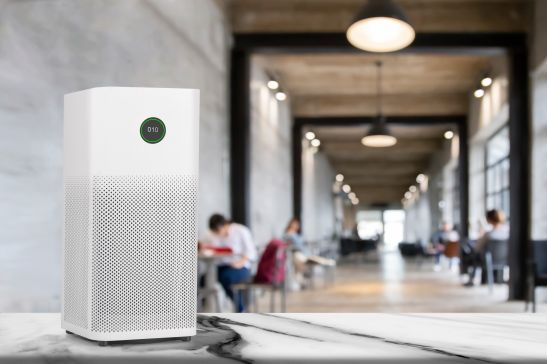By: | Updated: Jul-20, 2022
A study involving participants living in single-family homes with central air conditioning units showed that concentration levels of fine particulate matter were higher in the participants’ homes than in the office. The study by Texas A&M University also found that the level of VOC in homes was higher than in the workplace. While VOC levels in both homes and offices were below the limit recommended by health standards, respondents in this research admitted they experienced higher frequency of health symptoms while working from home.
Findings from this research highlight the importance of indoor air quality and the increasing need to enhance air quality indoors. By improving indoor air quality, individuals working from home can reduce health conditions like lung cancer and respiratory allergies, as well as headaches, itchy nose, and dry throat. To reduce indoor air pollution, individuals need to understand how the quality of air is different inside homes and workplaces, and they should know that it can cause allergy symptoms or colds. Keep reading to learn how you can improve indoor air quality in homes and offices.

Indoor Air Quality
It’s natural to assume the indoor air quality in homes is higher than in the office, but that’s not the case. The difference in air quality between homes and offices lies in the way air conditioning is installed. Typically, HVAC systems installed in companies clean air more often, meaning people in the workplace get to breathe in healthier air than they do at home. One way you can improve the quality of air in your home and prevent allergies, asthma, and colds is by keeping windows and doors open. Observing proper ventilation in buildings is a sure way of increasing the flow of fresh air, thus removing stale air and dust.
Fine Particulate Matter
Researchers at the Texas A&M University found that fine particulate matter (PM 2.5) levels in homes exceeded the set standards, while 90% of office buildings complied with recommended levels. And while changing air filters regularly and wet mopping floors and other hard surfaces reduces circulation of fine indoor particulate matter, individuals should also make it a habit to clean their air vents.
Professional who do air vent cleaning use specialized cleaning equipment to clean building vents thoroughly. As a result, your HVAC system will work efficiently, thus promoting circulation of fresh air. That means there will be less dirt, dust, mold spores, and pollen floating in your surroundings.
VOC Levels
Like particulate matter, levels of VOCs in homes are higher compared to commercial spaces. That’s because many items in homes have VOCs, including mattresses, furniture, chemical-based cleaning products, cosmetic products, paints, aerosol sprays, and new carpets. Fortunately, you can reduce the impact of volatile organic compounds by adding indoor plants, such as ficus, spider plants, snake plants, peace lily, aloe vera, and areca palms. Houseplants improve air quality in buildings with poor ventilation and reduce pollutants like VOC, carbon, and benzene.
The quality of air inside homes may seem better than that in the office or outdoors, but the truth is, it’s not. Air pollution levels in houses is higher than in the workplace, but there are steps you can take to improve indoor air quality in homes and offices. Clean air vents, improve ventilation indoors, and add indoor plants to ensure that the air that you breathe in is free of toxins, VOCs, and substances that may be potentially harmful to your health.
(Visited 109 times, 1 visits today)





